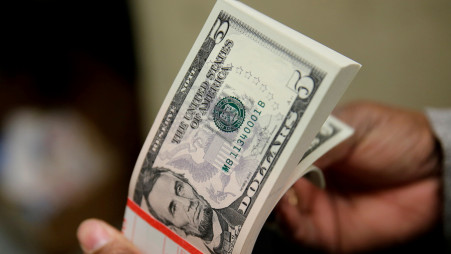Foreign loan pledges, disbursements see strong growth in Q1 FY26
Experts fear pledges, disbursements may fall in second half of FY26 due to uncertainty over the February election

Foreign loan commitments and disbursements saw a significant rise in the first quarter (July–September) of the current fiscal year 2025-26, with commitments skyrocketing 3,222% and disbursements rising 35.7%, according to data released today (30 October) by the Economic Relations Division (ERD).
Development partners pledged $910.67 million in loans during the first three months, compared to just $27.41 million in the same period last year amid the student-led mass uprising that toppled the previous government. Foreign loan disbursements rose to $1.147 billion, up from $846.1 million a year earlier.
ERD officials said both commitments and disbursements increased this year, as last year's political turmoil had disrupted development activities and project implementation.
The highest commitment of $481 million came from the Asian Development Bank. The World Bank pledged $12.44 million, while other partners committed a total of $416.52 million.
The largest disbursement was made by the World Bank, which released $322.63 million. Russia followed with $315.39 million, ADB disbursed $187.72 million, India $63 million, and Japan $40.67 million.
While commitments and disbursements increased in the first months of this fiscal year (which runs from July to June), experts fear that both may decline in the latter half of the year due to uncertainty surrounding the upcoming national election scheduled for February next year.
Election poses a major concern for foreign aid
Mustafa Kamal, executive director of the Institute for Inclusive Finance and Development (InM), said that following last year's unrest, Bangladesh is back on a democratic path and sending a positive signal globally, prompting renewed commitments. However, investments are yet to pick up as many issues remain unresolved.
He said business growth in the coming months will largely depend on the political situation. "With the national election approaching, uncertainty remains over whether it will be free and fair, and whether all parties will accept the results. This uncertainty is influencing business and investment decisions," he noted.
"The international community wants to see a participatory and credible election where all parties take part and accept the outcome. That remains a major challenge for Bangladesh," he added.
"If the country overcomes this challenge and forms a stable, elected government, investor confidence will return, leading to increased foreign aid, new commitments, and business momentum. But if disputes arise over election results — if any party refuses to accept them — uncertainty will resurface," Kamal added.
Masrur Reaz, chairman and CEO of Policy Exchange Bangladesh, said, "Compared to last year, the situation has improved, especially in terms of foreign assistance. The government is now in a stronger position regarding fiscal management, foreign loans, and development spending, with greater clarity in its financial and aid management policies."
However, many development partners are still waiting for the upcoming election. "Once a stable, elected government takes office, they will engage with the new policymakers to approve new projects and scale up commitments," Reaz noted.
Debt repayments rise as well
In the first quarter of the fiscal year, Bangladesh saw a notable increase in foreign debt repayments as well. Repayments grew 13.6% compared to the same period last year.
According to ERD, the country paid a total of $1.280 billion to development partners, including principal and interest, up from $1.126.5 billion in the first quarter of the previous fiscal year.
Of this, $816.9 million went toward principal repayments (up from $685.5 million), while interest payments totalled $463 million, compared to $441 million last year.
ERD officials noted that many large loans taken in the past have reached the end of their grace periods, prompting the start of principal repayments. This trend is expected to continue, gradually increasing foreign debt repayments in the coming months.



 Keep updated, follow The Business Standard's Google news channel
Keep updated, follow The Business Standard's Google news channel


















